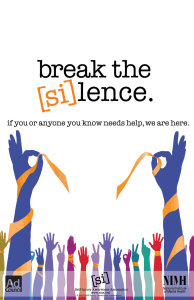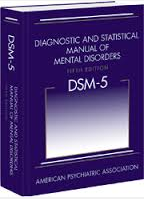

Today is Self-Injury Awareness Day. Many people choose to wear an orange ribbon, write “Love” on their arms, or draw a butterfly on their wrist. The ultimate goal of the day, however, is to break down the common stereotypes surrounding self-injury and to educate people about the condition. Because I work in the school setting, I’m going to be focusing on implications for teachers and staff. Most teachers, staff, and administrators receive little to no training about Nonsuicidal Self-Injury (NSI). Unfortunately, this leads many well-intentioned adults to make assumptions about their students who self-injure and can have harmful effects as a result.
 Myth #1: Self-Injury Isn’t that Common
Myth #1: Self-Injury Isn’t that Common
Fact: Self-Injury rates vary dramatically depending on what definition and sample are used, but Klonksy (2011) & Zetterqvist (2013) found that 17-35% of adolescents report a single NSI episode and 6.7% reported 5 or more self-injury episodes. For adults, 5.9% reported a single NSI episode and 2.7% reported 5 or more. However, regardless of the actual percentages, NSI is extremely common and chances are good you will encounter a student who self-injures at some point in your career. That being said, NSI is not just a “white teenage girl problem,” as is the common stereotype. People who self-injure can be guys, girls, age 60, age 12, and of any ethnicity.
Myth #2: Self-Injury is just another word for “cutting”
Fact: While cutting is one of the most popular ways people self-injure, NSI covers a range of behaviors including scraping/scratching, burning, healing prevention, breaking limbs, and many other behaviors. The word “Self-Injury” is the preferred term because it encompasses all of these methods. In addition, professionals should avoid calling someone a “Cutter” because it dehumanizes them, defining the person by a behavior rather than who they are.
Myth #3: The best way to make sure a student isn’t self-injuring is to do “body checks”
Fact: I never recommend that parents or school staff do “body checks.” It is a huge invasion of privacy and as such is best left up to medical professionals for the purpose of ensuring student safety, treating infections, etc. – NOT for parents or teachers to make sure their son/daughter/student isn’t injuring. Unfortunately, if someone is going to self-injure, they’re going to self-injure. Constantly checking their arms and legs for injuries will most likely lead them to injure in more discrete places – thighs, genitals, etc.
Myth #4: Nonsuicidal self-injury is a re-enactment of abuse
Fact: Klonsky & Moyer (2008) found that through a meta-analysis of over 40 studies, there was a very small association between NSI and childhood sexual abuse. Only about 1/3 of patients in their study indicated prior abuse. So while abuse is common in people with NSI, it is in no way a given.
 Myth #5: Self-Injury is attention-seeking
Myth #5: Self-Injury is attention-seeking
Fact: This one really gets to me. Too often, I’ve heard parents or teachers tell a student they were hurting themselves for attention and needed to cut it out. I’ve never had this advice help a student I worked with and generally it only makes them feel more isolated and misunderstood. Self-injury is usually very private and personal, and people who self-injure often go to great lengths to cover up their injuries (such as wearing long sleeves or pants, even in winter). Most people self injure for many of the following reasons:
- Emotional Regulation (“Self-injuring calms me down.”)
- Interpersonal Influence (“If I’m hurt, people will know the extent of my pain inside.”)
- Anti-Dissociation (causing pain so as to stop feeling numb)
- Self-Punishment (“I deserve this because I am worthless.”)
- Anti-Suicide (to halt suicidal thoughts)
- Sensation Seeking (adrenaline rush)
- Bonding (fitting in with peers who self-injure or participate in risky behaviors)
- Marking Distress (my outside pain matches my inside pain now)
- Self-Care (caring for a physical pain is easier than caring for emotional pain)
- Toughness (“I self harm to see if I can stand it.”)
- Revenge (get back at someone)
- Autonomy (“I don’t need to rely on anyone. I can take care of myself.”)
Generally, the most common reason people self-injure is for emotional regulation and self-punishment. However, most people who self-injure report injuring for several of the reasons listed above. Only a few people self-injure for attention-related reasons such as Bonding or Interpersonal Influence.
Myth #6: People who self-harm are suicidal
Fact: Most people who self-injure are usually trying to do the opposite of kill themselves, as shown by the “Anti-Suicide” reason above. For most, self-injuring is a coping mechanism to deal with pain, not a way to die. However, there is a relationship between self-injury and suicide and some people who self-injure also have suicidal feelings. In addition, some forms of self-injury can lead to accidental death, so it’s important that people who self-injure learn safer coping strategies. That being said, it’s always a good idea to assess a student for suicidality if you have discovered that they self-injure, but not assume they are suicidal.
Myth #7: Teenagers who self-injure will grow out of it
Fact: While there is not much long-term research to shed light on how many teenagers who self-injure grow up to be adults who self-injure, self-injury is an indication that an individual is experiencing extreme emotional distress that needs to be addressed. There are many teenagers in the world who do not self-injure – it’s not “just a typical teenage thing!”
 Myth #8: People who self-injure have Borderline Personality Disorder (BPD)
Myth #8: People who self-injure have Borderline Personality Disorder (BPD)
FACT: Although NSI was mentioned in the DSM-IV as a symptom of Borderline Personality Disorder, experts argue that not everyone with BPD self-injures, and not all people who self-injure have BPD. NSI can be a feature of BPD, but only in the presence of a complex set of other symptoms.
Myth #9: People who self-injure could stop if they really wanted to
Fact: NSI is an incredibly addictive and reinforcing behavior. Injuring distracts a person from emotional pain and releases endorphins in the body which numbs pain. Telling someone just to “stop it,” only serves to further alienate them. Individuals who self-harm need to learn appropriate strategies for coping with their emotional pain, not just to “toughen up” or “stop it!”
Myth #10: If the wounds aren’t “bad,” self-injure isn’t a serious problem
Fact: The severity of the self-inflicted wounds has very little to do with the level of emotional distress an individual is experiencing. Different people have different methods of self-injury and different pain tolerances. The only way to find out how much distress someone is in is to ask them.
Come back next week, when I’ll be sharing ideas and strategies you can use with students who self-injure.
Need help?
If you self-injure and need help, but don’t knowwhere to turn, call the S.A.F.E. Alternatives information line in the U.S. at (800) 366-8288 for referrals and support for cutting and self-harm. For a suicide helpline outside the U.S., visit Befrienders Worldwide.
In the middle of a crisis?
If you’re feeling suicidal and need help right now, call 9-1-1 or the National Suicide Prevention Lifeline in the U.S. at (800) 273-8255.







 Unexplained wounds or scars from cuts, bruises, or burns. Scars are most often seen on the wrists or arms, but can be in other locations as well.
Unexplained wounds or scars from cuts, bruises, or burns. Scars are most often seen on the wrists or arms, but can be in other locations as well. Listen and affirm. After a student discloses self-injury, listen. Admitting self-injury takes a great deal of courage and risk on the part of the student. Acknowledge this courage in asking for help and reaffirm their worth as a person. Make sure to remind them that self-injuring does not have to define them. But most importantly, validate the feelings they are experiencing.
Listen and affirm. After a student discloses self-injury, listen. Admitting self-injury takes a great deal of courage and risk on the part of the student. Acknowledge this courage in asking for help and reaffirm their worth as a person. Make sure to remind them that self-injuring does not have to define them. But most importantly, validate the feelings they are experiencing.

 Myth #1: Self-Injury Isn’t that Common
Myth #1: Self-Injury Isn’t that Common
 Myth #8: People who self-injure have Borderline Personality Disorder (BPD)
Myth #8: People who self-injure have Borderline Personality Disorder (BPD)




